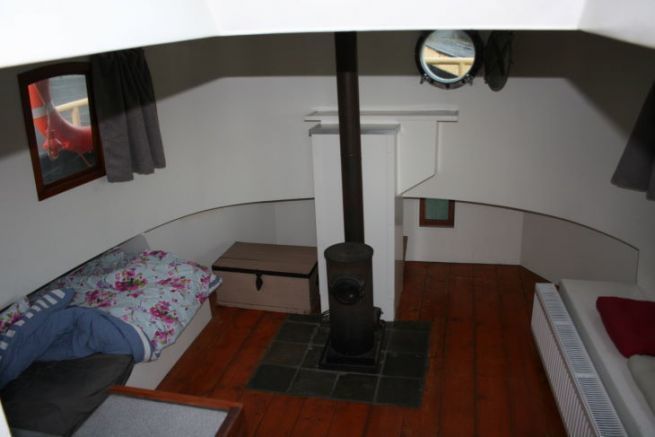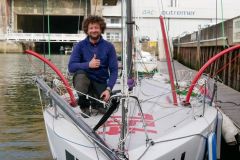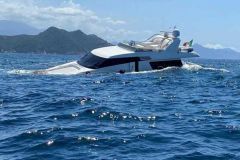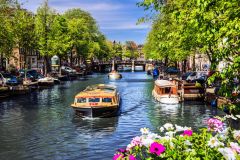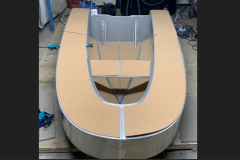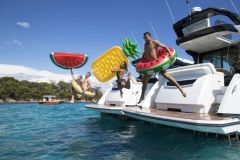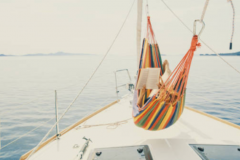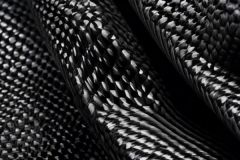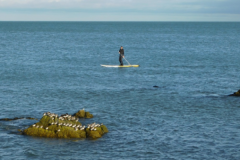The basic principle of heating is immutable, governed by 3 main types of diffusion: conduction (the he heat is transported by a material element, metal, stone, brick ), convection ( a medium transports heat, like water in a heating circuit ) or radiation ( there is no need for contact between the transmitter and receiver of the heat ).
Marc Grohs is responsible for the boating division at Webasto. The equipment manufacturer is active in heating, air conditioning and various other equipment for recreational vehicles and boats. He explains the heating solutions that allow boaters to get through the winter chill as comfortably as possible.
Produce heat and then transform it
Marc begins " Whatever the solution, a heating system will convert an energy source - oil, electricity, air - into calories. These calories are felt as heat. Even if it is a detail, this principle is to be kept in mind, there must be an energy source upstream of a heating solution. "Whether they are more or less environmentally friendly, all solutions will consume energy.
" The current research in the field of nautical heating goes towards the miniaturization of the equipment on the one hand, towards the optimization of their output on the other hand. An old generation heater has a ratio of 0.5 to 1 where a modern solution will have a ratio of 4 to 1. "For every 1 watt consumed, an older heater will produce 0.5 W of heat, a newer one 4 W.
What is the comfort temperature?
If, in a building, we are used to say that a temperature of 19°C is comfortable, on a boat the feeling of heat is strongly impacted by the ambient humidity and the air currents. Thus, with the same volume and humidity, to feel comfortable, the temperature must be increased by 2 to 3 degrees. This search for temperature must be accompanied by a balancing of the humidity. The temperature felt increases by 2°C if the humidity level is increased from 25% to 50% in a room. There is no need to try to remove too much humidity.
Heating at the dock
" Depending on whether you are sailing or docked, the proposed solutions will be different. You should not think of your heating solution in one or the other of these scenarios. When docked, there is no doubt that the solution of a heating system connected to the mains will be the most efficient on a boat. Coupled with a room thermostat, it will be possible to obtain an appreciable comfort temperature "explains the specialist. Beware of extension cords and other power strips that may be used to power these heaters.
" Do not forget to check the power delivered by the pontoon plug. Often, in France, we are between 5 and 10 amps, that is to say 1 000 à 2,000 watts which only allows the supply of an electric radiator "adds Marc.
Heating while sailing
Dockside heaters are a solution only when the boats are not in use. They are only a complement to the main heating system installed on the boat.
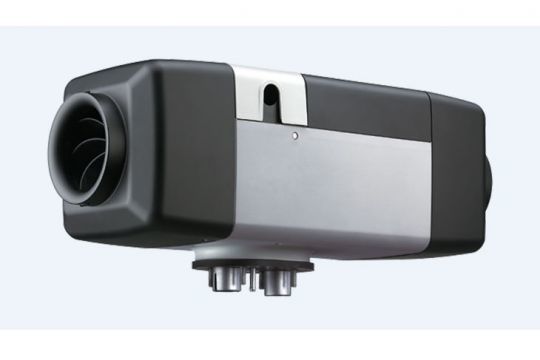
" Two main families of heat transport exist on boats. The air heater works like a hair dryer, but with diesel fuel. The heat is transported by air which is heated by contact with an enclosure which rises in temperature by a flame or pyrolysis. Effective at short range, this solution is comfortable to create a temperature base. Indeed, air is a very bad vector of energy. Worse, after a few meters or centimeters where it remains hot, it will bring a feeling of coolness. This air system is therefore to be favored for small volumes. Or, it will be completed with a secondary system to gain the missing degrees "explains the heating expert.
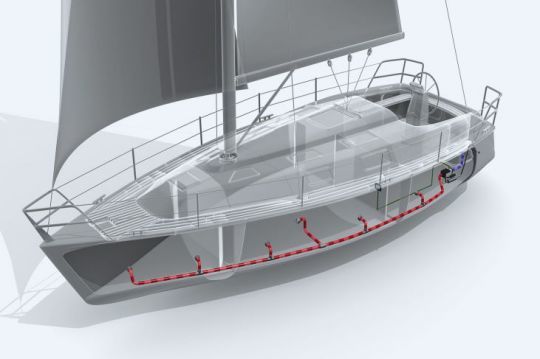
" Water heating, or heating using a mixture of water and glycol as a medium, is the best known, both in the domestic and nautical fields. It requires radiators to be installed on board. The result is both a consumption of space on board and an increase in weight. To overcome this disadvantage, there are now radiators that are equipped with fans to increase the radiation "says Marc. " A water system can circulate for miles without major loss. It has one important disadvantage, the risk of water leakage. As much as an air heater will only let air escape without any major impact, a fluid leak can cause major damage on board. "
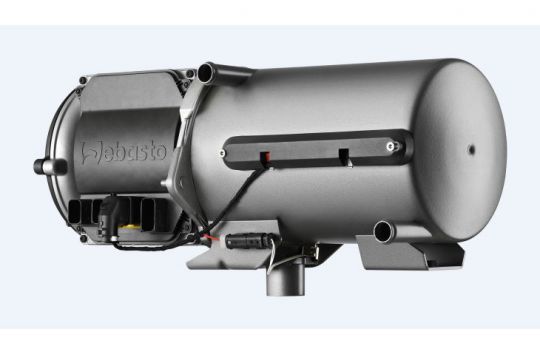
Multiple methods of heat generation
" If heat transport solutions are few, heat production solutions are legion. From the electric resistance to the pellet stove, each solution has its advantages and disadvantages "explains Marc.
" Let's take the most common ones though. Two families, the central heating and the local heating. Central heating is the boiler equivalent to the one we have at home. It does not serve to heat, not in itself, but to transfer heat to a medium that will distribute it. The local heating heats only a room or a portion of the boat "explains the professional.
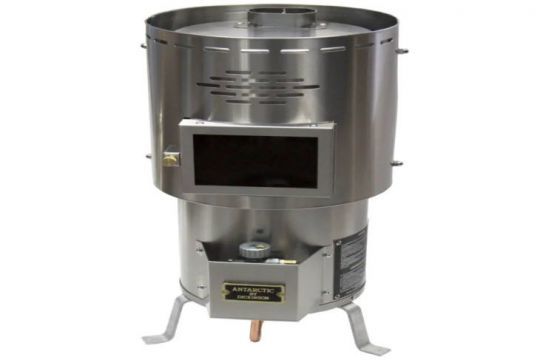
" Hybrid solutions exist, which consist in heating locally and remotely. For example, an oil stove will heat the room in which it is installed by the rise in temperature of the heating body, most often made of cast iron or steel. It will simultaneously heat water which will be distributed in a network of radiators, or air which will be heated in the combustion chamber "he continues.
We can list in the main sources of energy, direct or indirect :
- Electricity is only an option when docked on most boats, which do not have electric generators powerful enough to power heaters that consume several thousand watts.
- Solar energy In its thermal production capacity, it is efficient when it is daytime and sunny, therefore in areas where the need for heating is lower. Its major disadvantage lies in the difficulty of storing heat during the day to redistribute it at night. It is most often used to heat water for showers.
- Liquid fuel heating is currently the most efficient. It allows discontinuous operation for long periods, without any other input than the fuel often used for the boat's mobility. The disadvantage of these systems is the pollution they generate, both upstream and downstream.
- Heating with fuel solid ( wood or pellet ) is a possible solution when stationary. Although it is functional when moving, it presents significant dangers, particularly in terms of fire. It is also difficult to keep the fuel dry on board a boat. Finally, these fuels are bulky.
- The heat pump, which corresponds to a reversible air-conditioning system, has a particularly beneficial energy efficiency of about 1 to 4. In sea water ( by pumping sea water, therefore This makes it an interesting solution, but the investment is substantial and the equipment to be installed on board is imposing and consumes electrical energy. It is therefore essential to take into account both consumption items before deciding to opt for a heat pump.
- The recovery of engine heat on the exhaust systems.
Which efficiency for which fuel?
Although not very efficient ecologically speaking, oil - and its derivative fuel oil - remains the ideal choice in terms of energy performance. We talk about Higher Calorific Value ( PCS ) to express its capacity to produce heat per unit volume or mass.
L' standard of this HCV is the kWh ( kilo Watt hour ) which is 1 .
Thus, we find the following figures:

The heating solution of the future?
If the cheapest energy is always the one that is not consumed or produced, heating is an obvious element of comfort and safety on a boat. Marc Grohs explains what he believes will be the solution of the future: " There has been a lot of talk about dual energy. I think it is still relevant and will be revived. The key question is that of energy efficiency in a small space where there is relatively little we can do in terms of insulation. A boat is sold as is, with its insulation adapted to a given climate. It is complicated to add insulation during the life of the boat "Marc begins.
" Reversible air-conditioning makes great promises because it offers comfort in two cases. Electric heating is a good solution when it complements or is complemented by another source. That's the secret, to have several means of production which will intervene each in turn, according to the need. "
" The question of heating should be asked as early as possible in the purchase process "continues the specialist. "It is almost impossible to install an efficient heating system on a boat that has not been equipped with one in the first place. "
